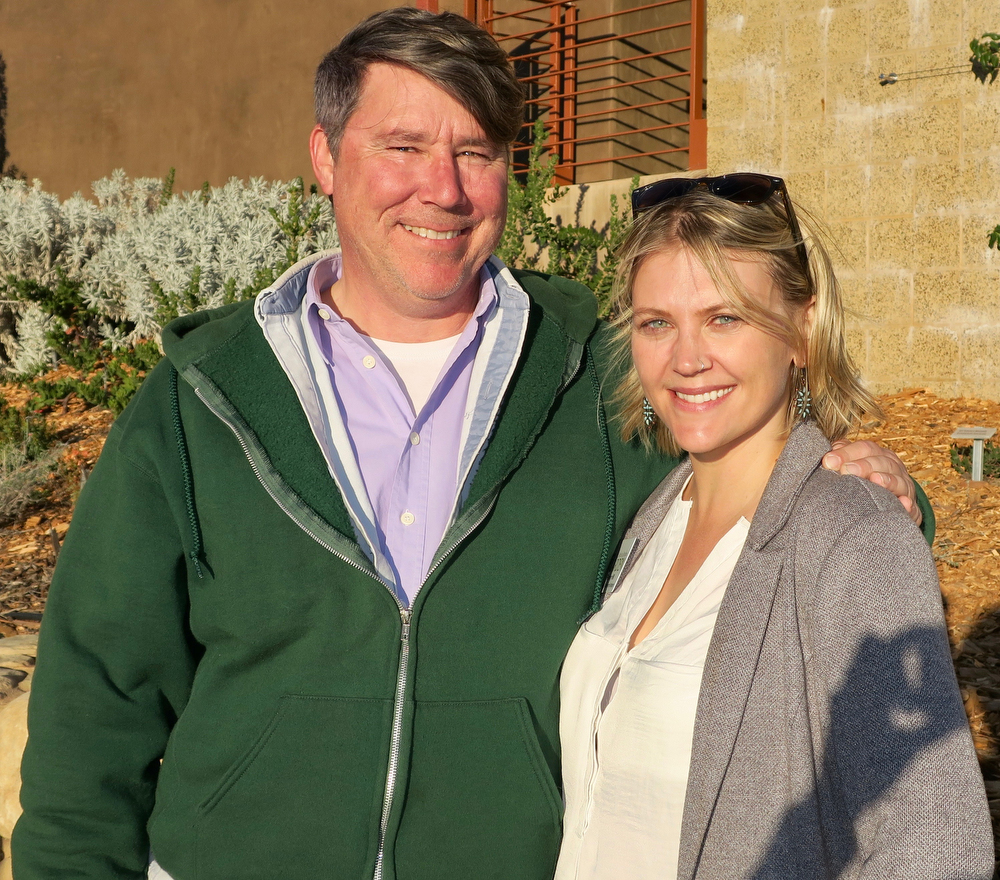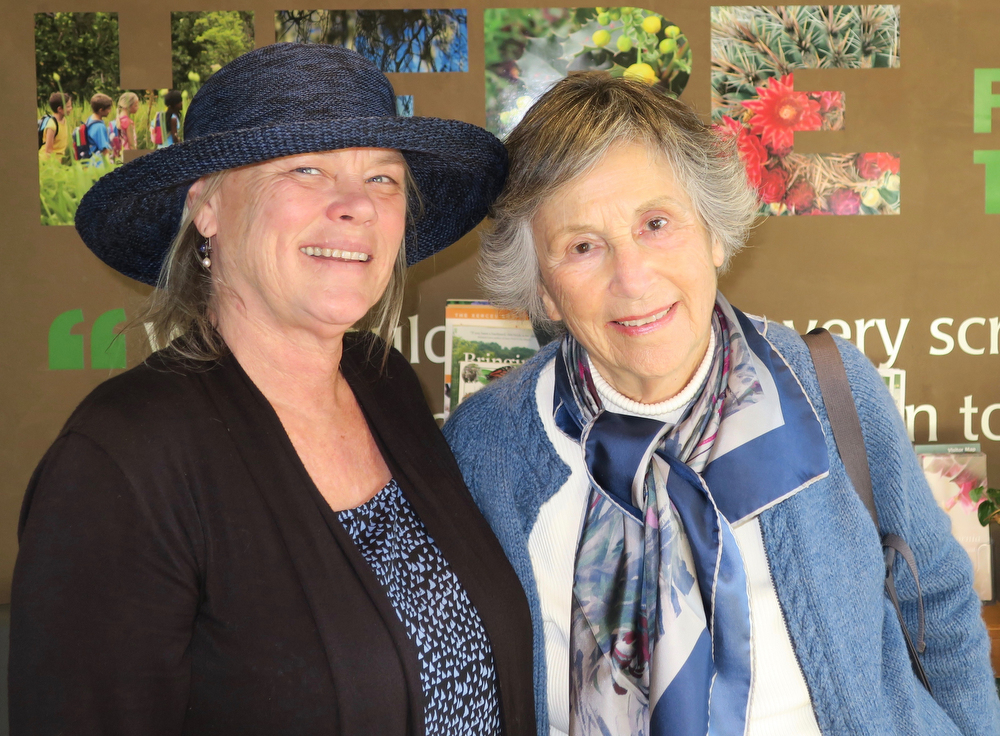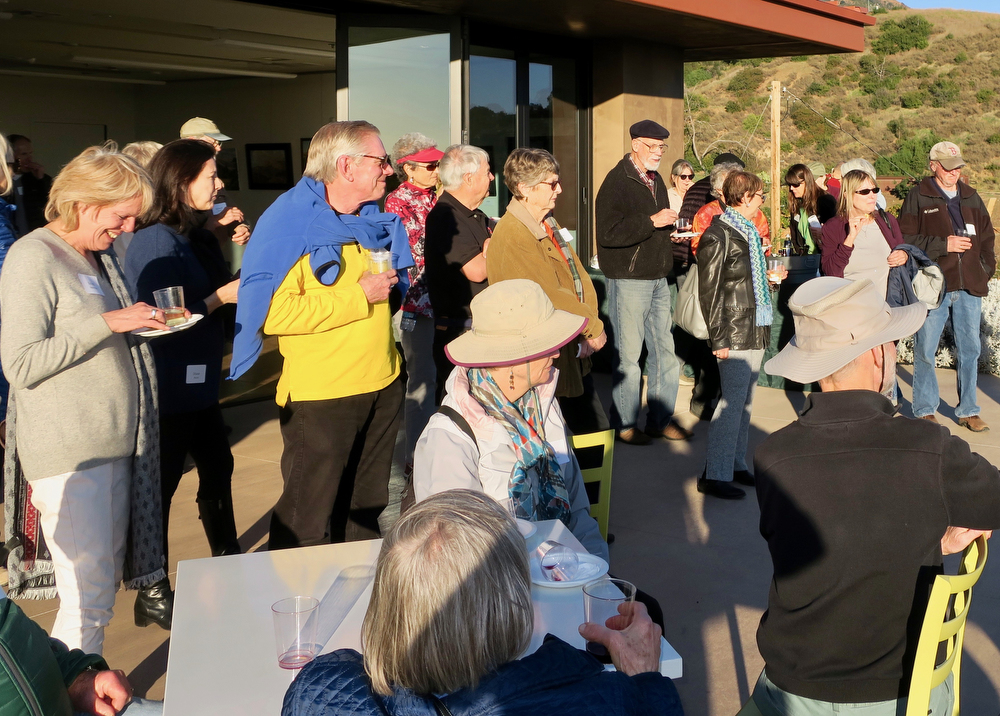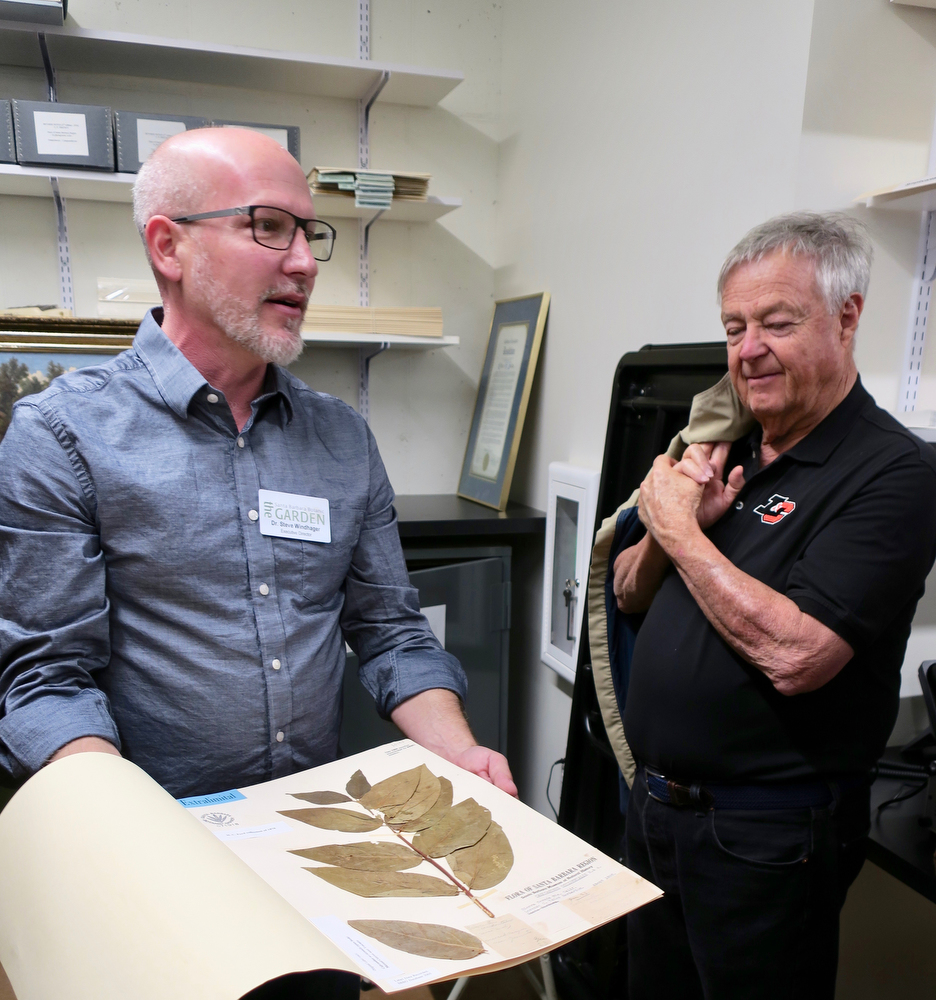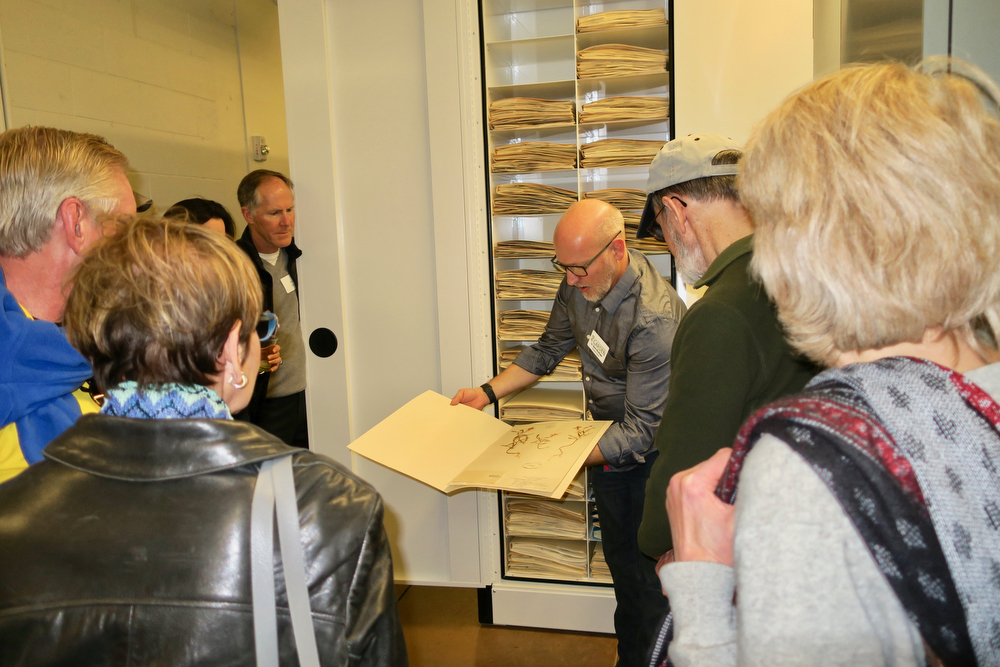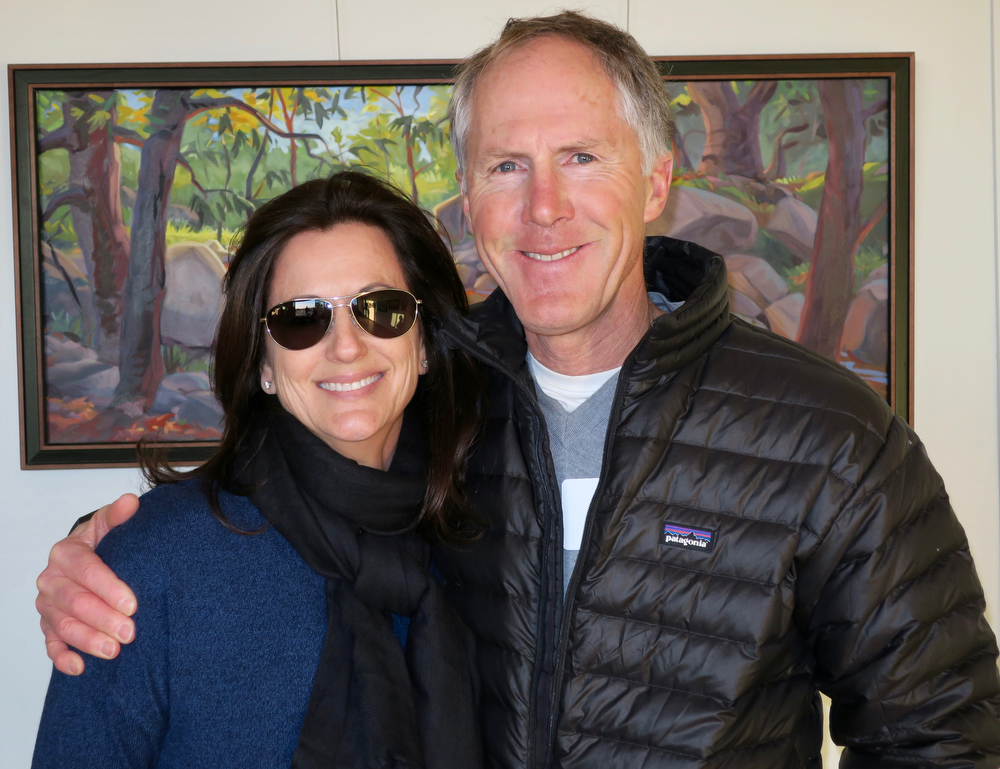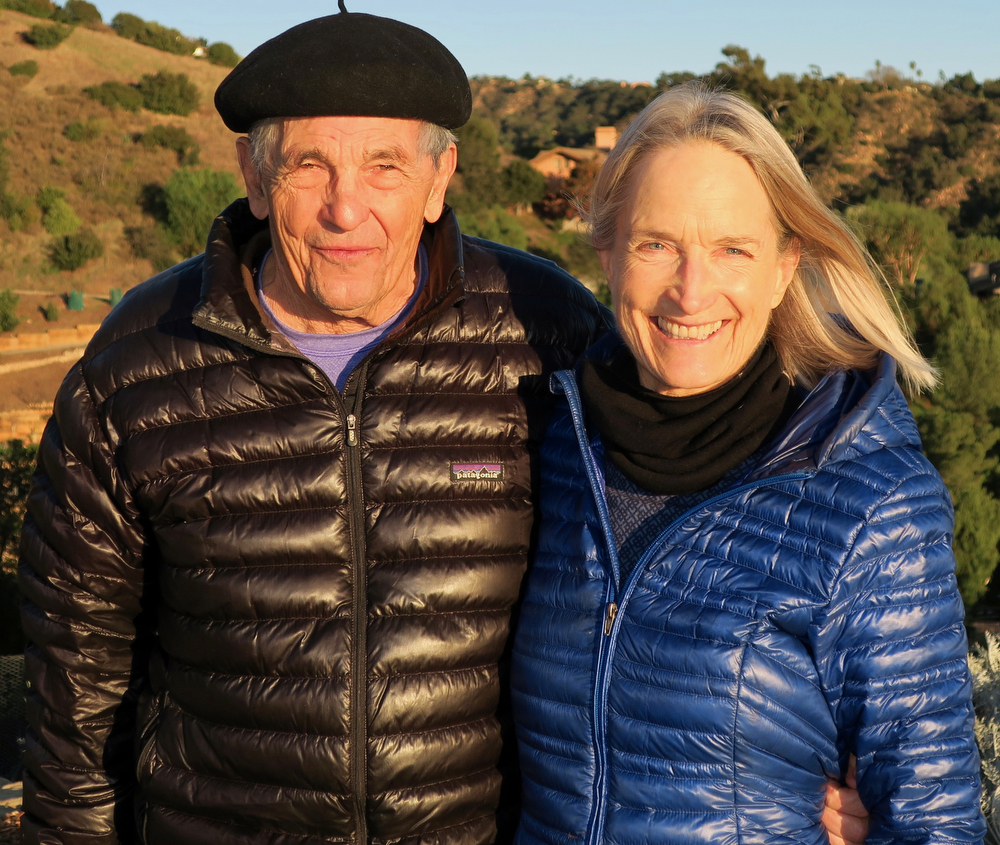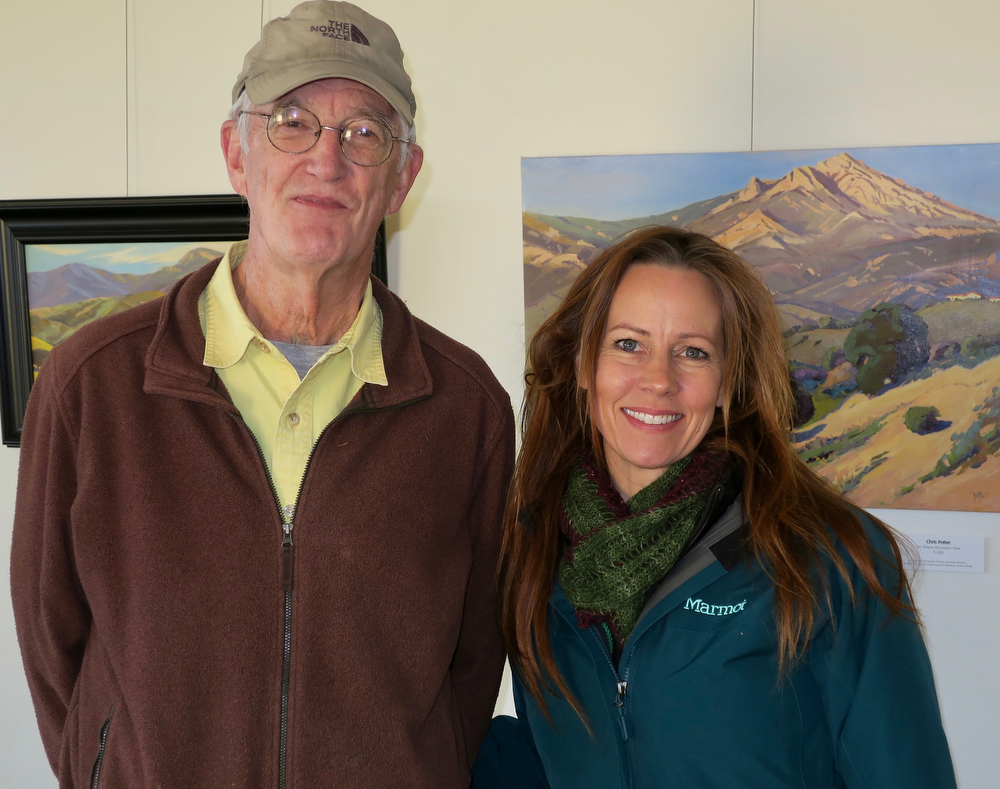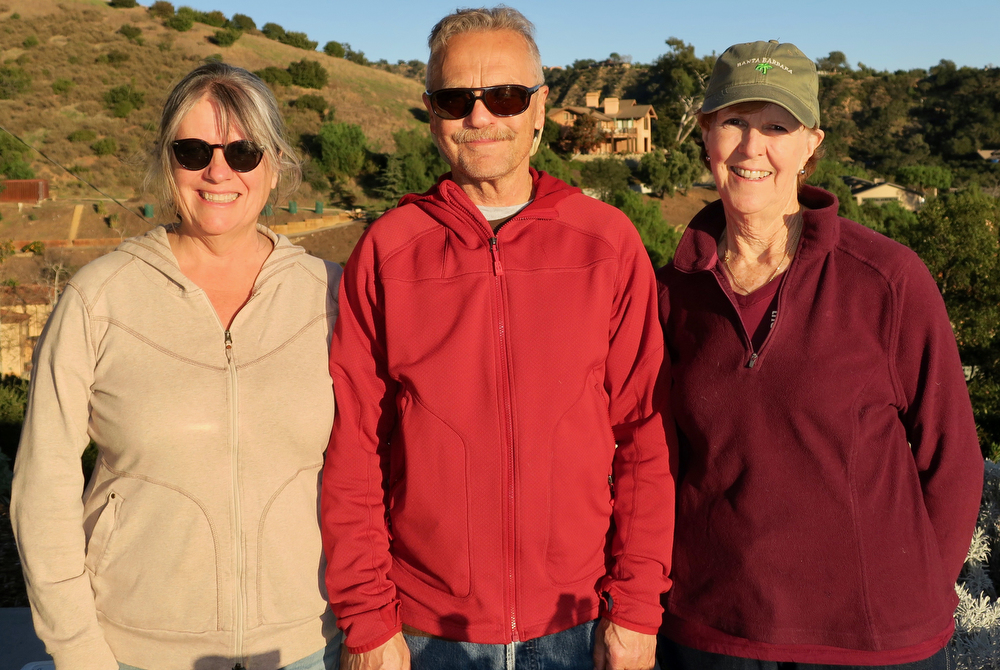Botanic Garden Holds Members Mixer
Guests Get Behind-the-Scenes Tour of Pritzlaff Conservation Center
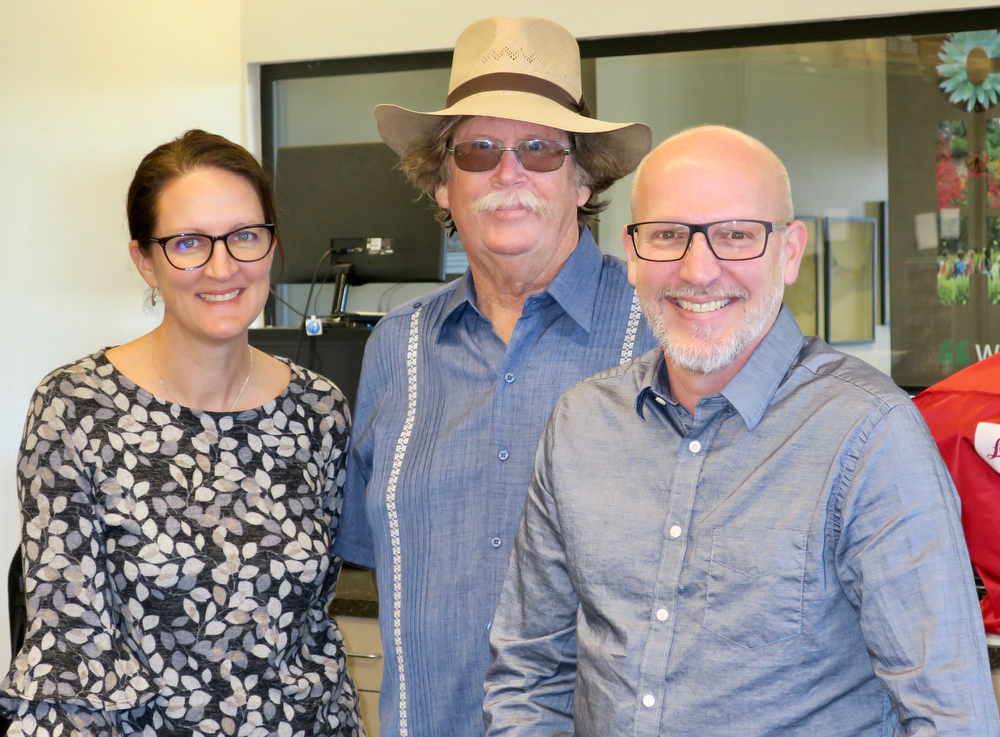
On January 20, the Santa Barbara Botanic Garden (SBBG) held a delightful Members Mixer at its Pritzlaff Conservation Center. While the event was open to all 2,500 of SBBG’s members, special invites went out to new members to introduce them to the benefits of membership and give them a behind-the-scenes tour of the center.
The two-year-old Pritzlaff Center, across the street from the rest of the garden, provided a stunning setting. Guests mingled on the spacious patio and lawn and inside the center, all of which afforded breathtaking ocean views. Guests enjoyed appetizers and drinks while viewing the art of Kevin Gleason and Chris Potter in the center’s gallery, which features rotating exhibits and is open to SBBG visitors every day. During a short program, Executive Director Steve Windhager welcomed the guests and shared his gratitude for members, who “really care about Santa Barbara, California native plants, and conserving that legacy so that our grandchildren get to experience the beauty of California the same way we all did.”
Many opted for one of the fascinating tours of the center, led by Windhager, and of the adjacent Island View Garden, led by Horticulturalist Bruce Reed. On tour, Windhager shared how SBBG has been doing conservation work for 90 years, but before it was done behind closed doors. Now, the new center offers guests a large window into its multipurpose lab to observe the center’s work.
Director of Conservation and Research Denise Knapp and some of her staff were on hand demonstrating their work, which seeks to understand the flora of California, protect the rarest things, and restore habitat. Next we entered the genetics lab, a state-of-the-art facility that allows staff to extract and store DNA to aid in understanding the diversity of California plants. According to Windhager, it is very unusual for a botanic garden not affiliated with a university to have its own genetics lab.
As we approached the freezers downstairs, Windhager explained how most plants on display in the garden were collected in the wild. Likewise, for research and conservation, staff goes into the wild and collects both rare plants and plants for the sake of their diversity and genetics. Its seed bank, which consists of dehydrated seeds, can last in a state of suspended animation in their freezers set at negative 125 degrees Fahrenheit for 200 years. Next on tour was the herbarium, which contains 160,000 specimens, some dating back to the 1870s. We got to view some of them up close, including spicebush from 1895.
In an interview, Director of Development and Communications Stephanie Linder shared how the Botanic Garden, with its expertise in post-wildfire restoration work, is especially relevant now. SBBG educates the public through classes, its website, its newsletter, and public speaking engagements. It is advising the public not to reseed after the fire, since this can pollute plants here if the seeds are from outside the area, even if they are native plants. She explained how there is a natural seed bank in the soil that responds to fire and the best course of action is to weed out invasive plants and let nature take its course. SBBG also offers its expertise in drought-tolerant plantings, which is especially relevant in our new normal of drought.
While in the 2009 Jesusita Fire SBBG lost 70 percent of its grounds and some of its structures, it was fortunately spared by the Thomas Fire and ensuing mudslide. The Botanic Garden has 5.5 miles of paths meandering through 78 acres of scenic grounds, which contain more than 1,000 different taxa of plants. For botanist and layperson alike, it provides a peaceful, beautiful retreat. SBBG offers a wide range of classes, school programs, programs for youth and families, and a Citizen Science program. Memberships provide essential support and come with myriad benefits, including invites to member-only events, free admission to the garden, discounts for classes, events, and purchases, and a subscription to the quarterly magazine. The SBBG’s more than 300 volunteers assist in every aspect of the garden’s operations. New volunteers are always needed, and orientations are held each month. The stunning Pritzlaff Conservation Center is available for event rental.
For more info about SBBG, go to sbbg.org.
If viewing this from a mobile device, click on “Desktop site” for more pics.
Send event invites to gail@independent.com.
